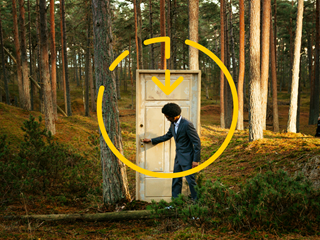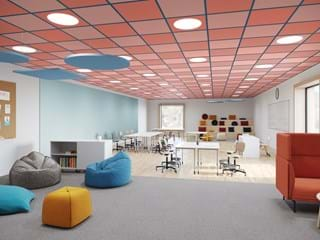What's up with new Focus Ds?
Our popular Ecophon Focus™ Ds ceiling is available with a new simplified single-layer system that allows for easier installation. Nevertheless, you get a result with the same aesthetical appearance – and an even better acoustic performance.







